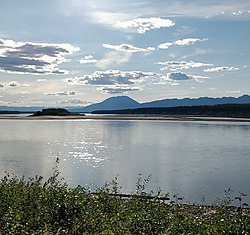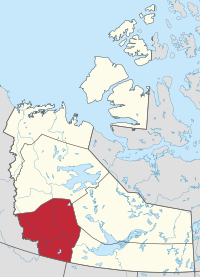Dehcho Region | |
|---|---|
 | |
 Location within the Northwest Territories | |
| Country | Canada |
| Territory | Northwest Territories |
| Federal riding | Northwest Territories |
| Territorial riding | Nahendeh |
| Regional office [1] | Fort Simpson |
| Area | |
• Total | 194,494 km2 (75,094.5 sq mi) |
| Population (2021) [2] | |
• Total | 1,926 |
| • Rank | 5th NWT |
| • Density | 0.0099/km2 (0.026/sq mi) |
| • % change (from 2016) | −7.6 |
| Time zone | UTC−07:00 (MST) |
| • Summer (DST) | UTC−06:00 (DST) |
Dehcho Region communities in the Northwest Territories
The Dehcho Region[ pronunciation? ] or Deh Cho is one of five administrative regions in the Northwest Territories of Canada. According to Municipal and Community Affairs the region consists of six communities with the regional office situated in Fort Simpson. [1] All communities in the Dehcho are predominantly Dehcho First Nations. [3] [4]






